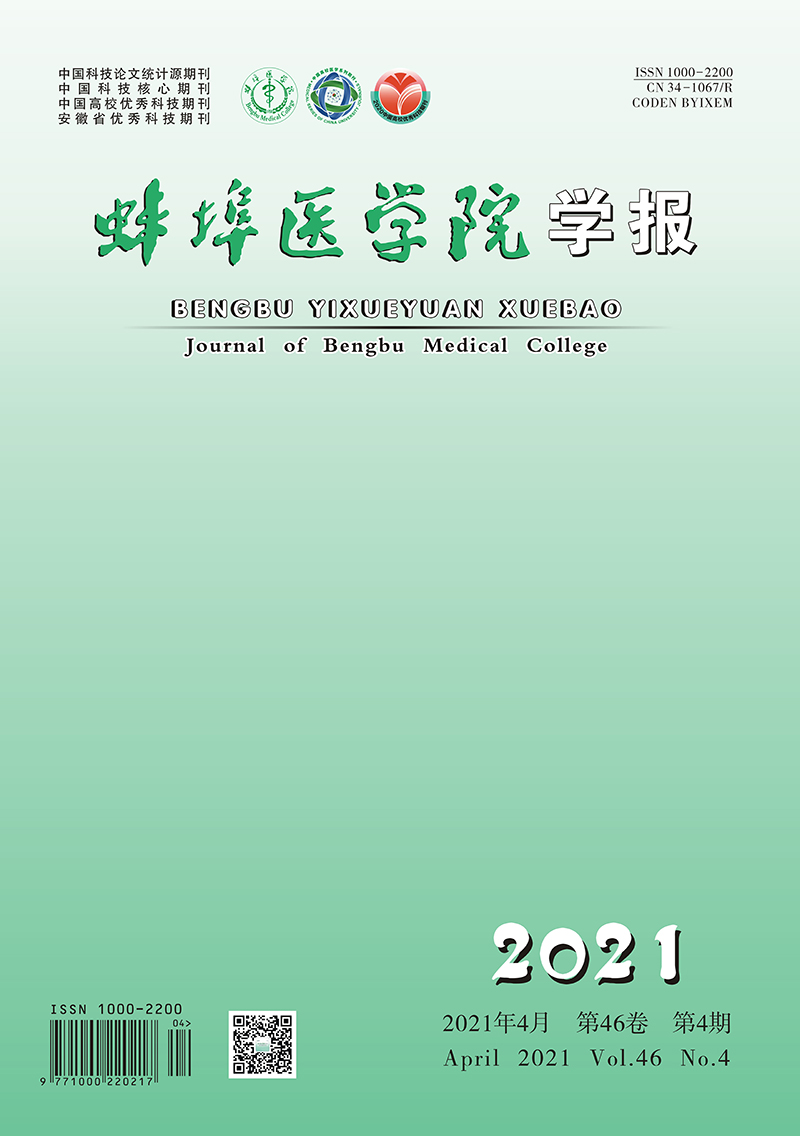-
近年来随着分娩镇痛技术在国内大力发展,麻醉医生们也越来越关注研究起效快效果确切并且相关并发症更少的镇痛方法。目前国内外越来越多的临床研究表明程控硬膜外间歇脉冲注入(programmed intermittent epidural bolus, PIEB)的方式,与传统的持续背景输注比较,PIEB具有追加率更低、用药量更少、视觉模拟评分法(visual analogue scale, VAS)评分更低、不良反应无明显增加及产妇的满意度更高等优点[1-5]。硬膜外穿透后硬膜外麻醉(dural puncture epidural, DPE)是一种区别于硬膜外和腰硬联合的技术,它是应用腰麻针戳破硬膜外,但不直接向蛛网膜下腔注药,而仍在硬膜外置管用药,而部分药物可能通过硬膜上的穿透孔加速药物完成了鞘内注射[6]。CAPPIELLO等[7]也报道,DPE技术在分娩镇痛中应用可获得良好的效果。本研究采用DPE联合PIEB的方式用于分娩镇痛,与目前常用的单纯持续硬膜外镇痛(continuous epidural analgesia, CEA)联合PIEB进行对比,观察DPE联合PIEB在分娩镇痛中的安全性、有效性及相关的并发症情况。现作报道。
HTML
-
本研究通过安徽省六安市人民医院医学伦理机构的批准,获得产妇或家属签署的分娩镇痛的知情同意书。选择要求分娩镇痛的单胎足月初产妇60例,美国麻醉医师协会(American Society of Anesthesiologists, ASA) Ⅰ~Ⅱ级。随机分为CEA+PIEB分娩镇痛组(A组)和DPE+PIEB分娩镇痛组(B组),每组30例。排除标准:有椎管内麻醉史及椎管内禁忌证;有语言沟通障碍的产妇;体质量指数>50 kg/m2;产妇拒绝接受本次研究;产妇在自主宫缩时VAS评分 < 5分;产前服用镇痛、镇静药史;高危妊娠等。
-
所有产妇进入产房后,助产士评估产妇宫口张开达到3 cm时行分娩镇痛,开放上肢静脉,快速输注乳酸钠林格液10 mL/kg,同时监测产妇的血压(blood pressure, BP)、心率(heart rate, HR)、血氧饱和度(pulse oxygen saturation, SpO2)、呼吸频率(respiratory rate, RR)和胎心率。所有的分娩镇痛操作均由主治及以上医师完成。产妇取左侧卧位,穿刺点均选择为L2~L3,使用18号硬膜外穿刺针,硬膜外导管留置在硬膜外腔内均为4 cm。A组产妇接受硬膜外穿刺置管。B组在接受硬膜外穿刺后使用25G的穿刺针穿破硬膜,以观察到脑脊液自然流出为准,且不在蛛网膜下腔注药。2组在硬膜外置管后均回抽无血和脑脊液后,注入试验量局麻药3 mL (1.5%利多卡因+5 g/mL肾上腺素),3 min后观察病人生命体征排除导管是否在血管内或在蛛网膜下腔。2组产妇都连接可实施PIEB的脉冲泵(ZZB-150型电子镇痛泵)。镇痛泵内装有标准药液低浓度的罗哌卡因和舒芬太尼的混合药液100 mL(0.075%罗哌卡因+0.5 g/mL舒芬太尼)并设置首剂量7 mL(首剂量),背景输注剂量为6 mL/h,产妇自控镇痛(patient controlled epidur alanalgesia, PCEA)剂量6 mL,锁定时间为15 min,最大剂量32 mL/h,给药速度为6 mL/min,每小时给药1次。嘱产妇VAS评分>3分时自行按压镇痛泵给药,分娩结束停药。
-
记录产妇镇痛前(T0)、镇痛后5 min(T1)、10 min(T2)、15 min(T3)、30 min(T4)、1 h(T5)、宫口开全时(T6)、分娩时(T7)的VAS评分。
-
记录产妇T0、T1、T2、T3、T4、T5、T6和T7的运动阻滞情况,运动阻滞采用改良Bromage评分法,分数越高,运动功能越低:0分为髋、膝、踝关节可充分屈曲,1分为仅膝、踝关节可屈曲,2分为仅踝关节可屈曲,3分为三关节均不能屈曲。
-
记录2组产妇自控镇痛(patient controlled epidur alanalgesia, PCEA)的次数,舒芬太尼的用量。
-
记录各组产程、分娩方式、新生儿Apgar评分。
-
分娩后48 h内随访产妇发生恶心、瘙痒、头痛的发生情况。
-
临出院前,产妇填写自拟的产妇满意度表,分数越高,满意度越高:0分非常不满意,10分非常满意。
-
采用t检验、χ2检验、方差分析和q检验。
1.1. 一般资料
1.2. 镇痛方法
1.3. 观察指标
1.3.1. VAS评分
1.3.2. 运动阻滞
1.3.3. 镇痛情况
1.3.4. 产程、分娩方式、新生儿Apgar评分
1.3.5. 不良反应
1.3.6. 产妇满意度
1.4. 统计学方法
-
2组产妇的年龄、身高、体质量和是否经产妇差异无统计学意义(P>0.05)。所有产妇均成功实施了分娩镇痛,产程中2组产妇生命体征(BP、HR、SpO2、RR)和胎心率平稳,差异无统计学意义(P>0.05)(见表 1、2)。
分组 n 年龄/岁 身高/cm 体质量/kg 是否经产妇 经产妇 初产妇 A组 30 28.6±3.9 161.2±5.7 72.3±3.2 18 12 B组 30 30.2±2.6 160.8±4.3 74.2±4.7 19 11 t — 1.87 0.31 1.83 0.07* P — >0.05 >0.05 >0.05 >0.05 *示χ2值 分组 n T0 T1 T2 T3 T4 T5 T6 T7 F P MS组内 收缩压/mmHg A组 30 126.3±12.2 122.1±12.9 124.4±13.5 124.6±13.2 126.2±12.7 126.3±13.5 126.5±12.7 124.9±12.8 0.48 >0.05 169.213 B组 30 123.5±12.6 122.9±13.1 123.4±13.4 125.1±12.8 127.1±13.4 125.7±12.8 125.7±12.6 125.6±12.5 0.47 >0.05 169.528 t — 0.87 0.24 0.29 0.15 0.27 0.18 0.25 0.21 — — — P — >0.05 >0.05 >0.05 >0.05 >0.05 >0.05 >0.05 >0.05 — — — 舒张压/mmHg A组 30 80.6±6.5 78.9±6.7 78.4±6.7 79.5±7.6 79.8±8.1 80.7±8.5 80.7±6.8 80.4±7.2 0.46 >0.05 54.608 B组 30 81.6±6.9 78.5±6.8 78.6±7.2 79.3±7.3 80.3±7.6 80.5±7.5 80.5±6.7 80.9±7.6 0.85 >0.05 52.165 t — 0.58 0.23 0.11 0.10 0.25 0.10 0.11 0.26 — — — P — >0.05 >0.05 >0.05 >0.05 >0.05 >0.05 >0.05 >0.05 — — — HR/(次/分) A组 30 98.3±9.5 98.5±9.7 98.3±9.5 98.6±9.4 98.6±9.5 98.5±9.7 98.4±9.6 98.3±9.7 0.01 >0.05 91.215 B组 30 98.6±9.6 98.7±9.8 98.5±9.3 98.7±9.6 98.3±9.8 98.7±9.5 98.2±9.3 98.2±9.2 0.01 >0.05 92.190 t — 0.12 0.08 0.08 0.04 0.12 0.08 0.08 0.04 — — — P — >0.05 >0.05 >0.05 >0.05 >0.05 >0.05 >0.05 >0.05 — — — SpO2/% A组 30 98.6±2.4 98.7±2.3 98.5±2.6 98.5±2.3 98.6±2.8 98.7±2.9 98.6±2.6 98.6±2.5 0.04 >0.05 6.558 B组 30 98.5±2.6 98.6±2.9 98.6±2.3 98.7±2.5 98.5±2.7 98.3±2.1 98.7±2.3 98.5±2.6 0.09 >0.05 6.402 t — 0.15 0.15 0.16 0.32 0.14 0.61 0.16 0.15 — — — P — >0.05 >0.05 >0.05 >0.05 >0.05 >0.05 >0.05 >0.05 — — — RR/(次/分) A组 30 13.5±4.6 14.6±5.2 15.4±5.1 13.5±5.3 13.4±4.3 13.5±3.8 13.6±4.2 14.3±4.9 0.91 >0.05 22.538 B组 30 13.9±4.9 14.8±4.6 15.6±5.1 13.9±4.2 13.8±4.9 13.9±3.7 14.2±4.3 13.9±3.8 0.76 >0.05 21.087 t — 0.33 0.16 0.15 0.32 0.34 0.41 0.55 0.35 — — — P — >0.05 >0.05 >0.05 >0.05 >0.05 >0.05 >0.05 >0.05 — — — 胎心率/(次/分) A组 30 138.5±8.2 137.6±7.8 136.5±6.9 139.5±8.4 139.2±6.7 137.5±8.3 135.9±6.9 136.9±7.3 0.64 >0.05 60.458 B组 30 136.9±8.3 139.1±7.9 136.4±8.2 138.6±6.9 137.6±8.2 136.9±8.5 136.8±6.8 138.2±7.5 0.56 >0.05 60.548 t — 0.75 0.74 0.05 0.45 0.83 0.28 0.51 0.68 — — — P — >0.05 >0.05 >0.05 >0.05 >0.05 >0.05 >0.05 >0.05 — — — -
2组产妇T1~T7时间点的VAS评分均较T0降低(P < 0.05),B组T1~T4的VAS评分均低于A组,差异有统计学意义(P < 0.05), 2组产妇所有时间点的改良Bromage评分均为0分(见表 3)。
分组 n T0 T1 T2 T3 T4 T5 T6 T7 F MS组内 P A组 30 9.9±0.5 7.6±2.0* 5.8±1.9* 4.6±2.1* 3.6±1.8* 3.3±1.3* 3.0±1.9 2.9±1.7 68.19 2.867 < 0.05 B组 30 9.6±0.7 2.7±2.6* 2.4±2.3* 2.3±2.1* 2.6±1.9* 3.3±2.0* 2.8±2.0 2.8±1.9 59.73 4.093 <0.05 t — 1.91 8.18 6.24 4.24 2.09 0.00 0.40 0.21 — — — P — >0.05 < 0.01 < 0.01 < 0.01 < 0.05 >0.05 >0.05 >0.05 — — — 与T0比较*P < 0.05 -
2组新生儿Apgar评分、产程、分娩方式差异无统计学意义(P>0.05)。B组产妇按压镇痛泵的次数、镇痛药物用量少于A组(P < 0.01和P < 0.05)。B组产妇满意度高于A组(P < 0.05) (见表 4)。
分组 n 新生儿Apgar评分/分 产程/min 分娩方式[n; 百分率(%)] 镇痛泵按压次数/次 舒芬太尼用量/mg 产妇满意度/分 1 min 5 min 第一产程 第二产程 第三产程 剖宫产 自然分娩 A组 30 9.2±1.3 10.0±0.0 389.2±126.3 47.3±10.8 8.8±1.8 2(6.7) 28(93.3) 4.8±1.2 58.7±25.7 8.3±1.5 B组 30 9.3±1.5 10.0±0.0 396.6±140.9 45.2±13.6 9.0±1.6 0(0.0) 30(100.0) 2.0±0.9 43.5±25.2 9.4±1.1 t — 0.28 0.00 0.21 0.66 0.45 0.52* 10.15 2.31 3.24 P — >0.05 >0.05 >0.05 >0.05 >0.05 >0.05 < 0.01 < 0.05 < 0.05 *示χ2值 -
2组产妇术后均发生不同程度的恶心、瘙痒及头痛,2组并发症发生差异无统计学意义(P>0.05)(见表 5)。
分组 n 恶心 瘙痒 头痛 总不良反应 χ2 P A组 30 1(3.3) 0(0.0) 0(0.0) 1(3.3) B组 30 1(3.3) 1(3.3) 0(0.0) 2(6.7) 3.45 >0.05 合计 60 2(3.3) 1(3.3) 0(0.0) 3(5.0)
2.1. 一般情况
2.2. 运动阻滞及镇痛效果
2.3. 分娩过程及结局比较
2.4. 2组分娩不良反应比较
-
随着椎管内分娩镇痛的推广,越来越多的产妇分娩时愿意接受分娩镇痛。传统的CEA是分娩镇痛中安全有效且在国内外被广泛应用[8],是用于分娩镇痛的标准技术。然而CEA仍需要15~20 min,药物透过硬膜作用于神经根从而缓解产妇的疼痛。腰硬联合麻醉技术是在应用腰麻针穿破硬膜,在蛛网膜下腔注射麻醉镇痛药,这种技术加速了镇痛起效的时间[9-11]。而腰硬联合麻醉技术有潜在风险,包括产妇血流动力学的不稳定、胎心减慢、皮肤瘙痒和恶心呕吐、排尿困难等阿片类药物使用的并发症增多[12-13]。
DPE是一种新的椎管内分娩镇痛方法。通常注入椎管内的麻醉药物可以通过完整的硬脊膜从硬膜外腔渗入到蛛网膜下腔,而硬膜穿孔加速了这一过程;PIEB技术可以通过增加镇痛药物的注入压力,将镇痛药顺压力梯度由硬脊膜穿刺孔“挤压”入蛛网膜下腔,起到了一个类似小剂量连续腰麻的作用。影响DPE效果的因素包括:增加跨硬脊膜压力,压力增大可以加速药物渗入蛛网膜下腔;硬膜穿刺孔与硬膜外注药点的距离;距离越近效果越好;穿刺孔的大小,穿刺孔越大镇痛效果越好;镇痛药物与硬膜的接触面积越大,DPE的易化作用也越明显。研究结果提示了与CEA联合PIEB的A组比,DPE联合PIEB的B组达到明显镇痛的时间明显缩短,VAS评分更低,镇痛泵次数明显减少,镇痛药物总量少,该结果也应证了上述观点。
椎管内分娩镇痛最为常见的并发症包括产程延长、血压下降、瘙痒、恶心呕吐等。分娩镇痛时产程延长可能与镇痛药物降低血浆催产素水平,且减低子宫对催产素的敏感性,从而抑制宫缩有关。研究显示B组使用的药物较A组更少,减少了镇痛时药物对子宫收缩的抑制,2组产程比较差异无统计学意义。B组镇痛药通过硬脊膜穿刺孔进入蛛网膜下腔速度缓慢,对产妇血压的影响较小,恶心呕吐的发生概率也较低。本研究中实施DPE联合PIEB的产妇分娩后随访并发症无明显增加,且产妇的满意度高,提示DPE联合PIEB可用于产妇的分娩镇痛。
蛛网膜穿破后头痛的发生也是椎管内麻醉的常见并发症,而且对产妇术后快速康复带来很大的困扰。既往也有关于探索DPE在外科手术和产科手术中的作用为了最大限度的减少椎管内麻醉对运动神经的阻滞而又最大缩短分娩镇痛起效的时间[6-7, 14-17]。先前的研究比较25、26、27号腰麻针在腰麻中的应用,其中应用27号腰麻针穿刺成功率较低。应用25、26号腰麻针穿刺成功率比较差异无统计学意义。本研究选择25号腰麻针,与A组比较,穿刺后镇痛起效时间明显缩短,头痛的发生率差异无统计学意义。
另外,CAPPIELLO等[4]报道了产妇应用DPE时出现了麻醉平面过高,低血压和呼吸困难的症状,原因可能与产妇硬外腔解剖结构差异、硬脊膜穿孔大小、脉冲泵压力等因素有关。虽然本课题在应用DPE联合PIEB行分娩镇痛时未发生低血压和呼吸困难等异常症状,可能与纳入的案例相对较少有关,但仍需要密切监测产妇的麻醉平面和生命体征。综上所述,DPE联合PIEB是安全的、有效的镇痛方法,可用于分娩镇痛。但DPE联合PIEB是否能成为分娩镇痛的标准技术,还需要更多的临床研究来证明和支撑。






 DownLoad:
DownLoad: